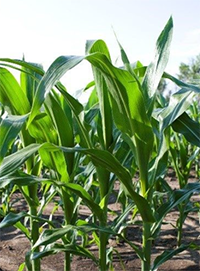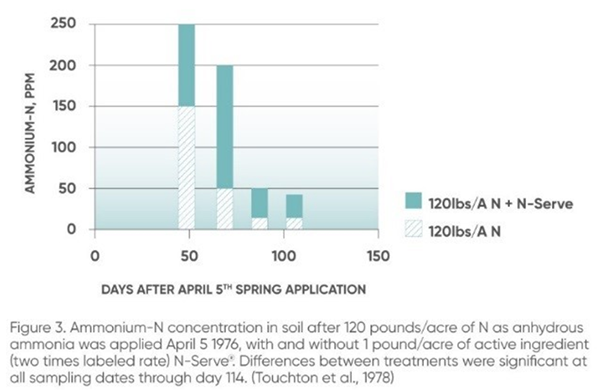 Each fall, your corn has been doing its thing, your planting work is finished and you’re waiting another few weeks until harvest to see the literal fruits of your labor. And although the thought of applied nitrogen is long gone, it’s important to consider the journey that nitrogen has been on and what that means for your crops this year and beyond.
Each fall, your corn has been doing its thing, your planting work is finished and you’re waiting another few weeks until harvest to see the literal fruits of your labor. And although the thought of applied nitrogen is long gone, it’s important to consider the journey that nitrogen has been on and what that means for your crops this year and beyond.
Come harvest, you’ll find out if the nutrient management plans you worked so hard to create have brought success and how you may need to adjust for the future. Therefore, now is the time to consider an essential question: Do you know where your nitrogen is?
Your Nitrogen … Today
Mike Moechnig, field scientist with Corteva Agriscience, said nearly all the nitrogen applied this season can be gone from the soil around the time corn is in its reproductive stages.
“It can nearly all be depleted with or without stabilization, which is a good thing because it would not be environmentally advantageous to have unused nitrogen left over at the end of the growing season,” Moechnig said. “The goal is to have as little leftover N as possible and Optinyte can improve the consistency of nitrogen availability for those who are closely managing their nitrogen programs.”
When looking at end-of-season nitrogen levels, it’s important to note the differences in how much nitrogen was available during critical growth stages earlier in the season for stabilized and nonstabilized nitrogen. These numbers can vary greatly depending on many factors, including the rate of applied nitrogen, temperature, soil type, precipitation and, of course, if a nitrogen stabilizer was used.
So, although today the bulk of your nitrogen is either in your crop or lost in some form, just how much is in either area depends on the success of your nutrient management plan and those other factors. Regardless, come early fall, a good nitrogen program will result in minimal leftover nitrogen.
Fall Application Considerations
Now that nitrogen is out of the soil and hopefully in your harvested crop, it’s time to start thinking about the next nitrogen cycle, beginning with fall nitrogen applications. It’s a long road from postharvest application to corn uptake, so it’s important to prepare for this long (and cold) nitrogen journey.
“Approximately 60% of nonstabilized, fall-applied nitrogen can be lost in early spring as temperatures rise, which can result in nitrogen shortages during the exponential phase of corn growth,” Moechnig said. “This is why protecting fall applications with a stabilizer, such as N-Serve, is so important.”
Moechnig said using a stabilizer in fall can keep a significant amount of nitrogen in the soil, ready for spring corn planting. He said results vary due to factors such as how much nitrogen is applied, application timing and subsequent weather conditions like rainfall, but applying a stabilizer is a good idea regardless.
Preplant and Sidedress Considerations
Once spring arrives, Moechnig recommended using N-Serve® or Instinct® nitrogen stabilizers to stabilize preplant and sidedress nitrogen applications as well. To illustrate the importance of a stabilizer at these times, he performed a trial over the 2018 growing season.
“In my soil trial, I found there was more nitrogen in the stabilized versus nonstabilized treatments at about the time corn would be tasseling,” Moechnig said. “From this trial, I confirmed that products with Optinyte technology can increase late-season soil nitrogen by 50% to 70% to ensure adequate nitrogen availability just prior to the corn reproductive growth stages.”

The chart above illustrates industry findings similar to Moechnig’s soil trial, in which stabilized acres were compared with those without a nitrogen stabilizer. The use of N-Serve in this trial shows a clear increase in available nitrogen in the soil over an extended period of time.
Moechnig said having ample nitrogen available to corn up to the reproductive stages (around tasseling), in late July or early August, can increase yield by about 10 bushels per acre. A good stabilizer can ensure the nitrogen is there.
The bottom line is that N-Serve and Instinct can keep nitrogen available to corn longer, thanks to the active ingredient of Optinyte™ technology. Optinyte technology protects nitrogen at the root zone by slowing nitrification, which helps prevent nitrogen loss via leaching and denitrification. It extends nitrogen availability in the root zone for up to eight weeks and this means nitrogen is available longer to your plants when they need it most.
Nitrogen takes a long journey every year, and a good nitrogen stabilizer can help ensure your corn crop is the ultimate destination on that journey.
Instinct is not registered for sale or use in all states. Contact your state pesticide regulatory agency to determine if a product is registered for sale or use in your state. Federal law does not require any person who applies or supervises the use of Instinct to be certified in accordance with EPA regulations and state, territorial and tribal laws. Some states may have additional requirements related to liquid manure and nitrogen stabilizers. Be sure to consult your state or local Extension service to understand your requirements. When applying Instinct to deep pits, appropriate manure agitation safety steps should be followed. Instinct should be applied directly to the deep pit prior to pumping the pit; a thorough agitation system must be operating in order to evenly distribute Instinct within the deep pit; applicators and handlers of Instinct and manure treated with Instinct are required to use proper protective equipment as stated on the product label; air ventilation systems must be operational inside barns. Do not fall-apply anhydrous ammonia south of Highway 16 in the state of Illinois. Always read and follow label directions.
The More You Grow
Find expert insights on agronomics, crop protection, farm operations and more.